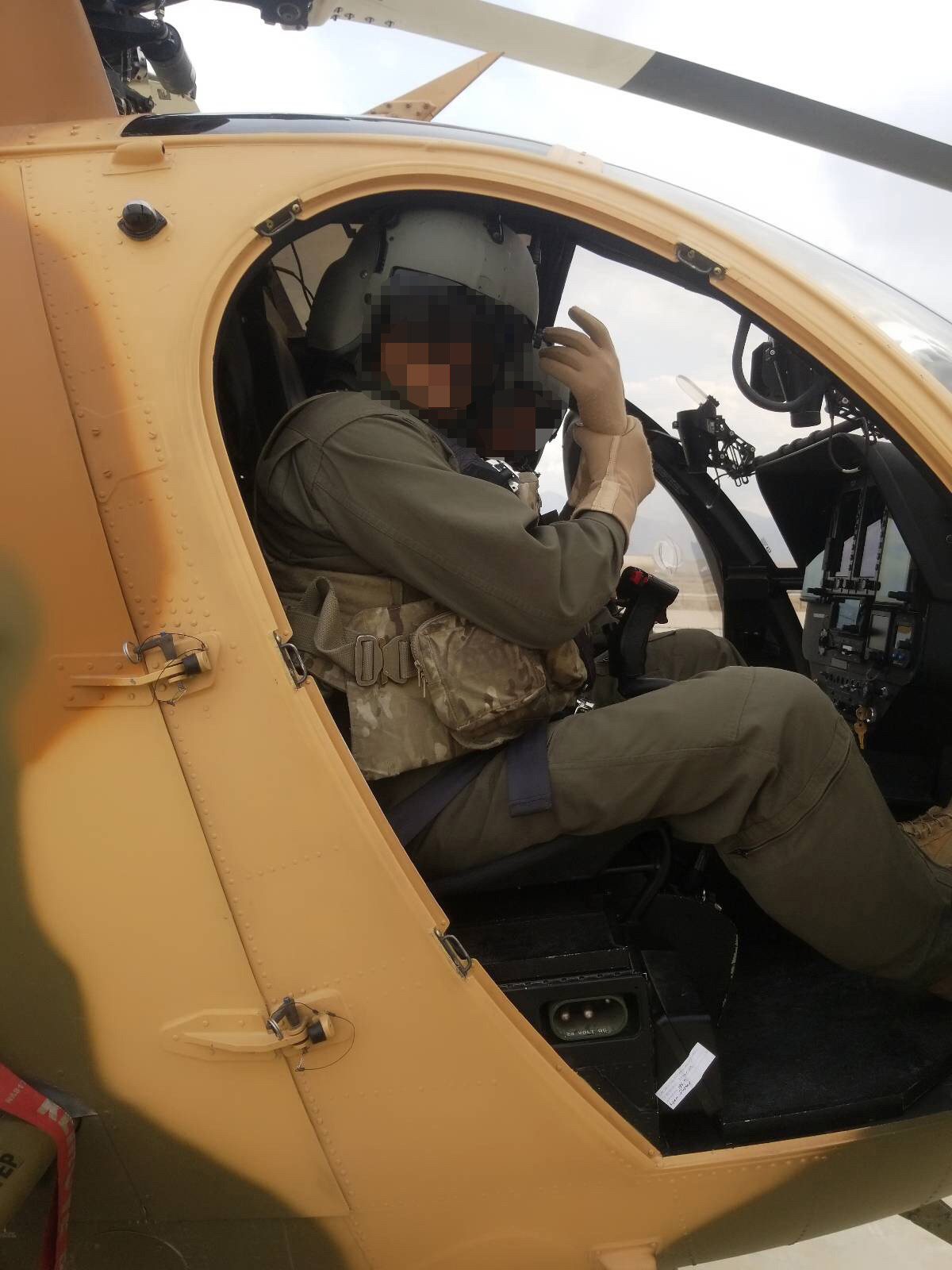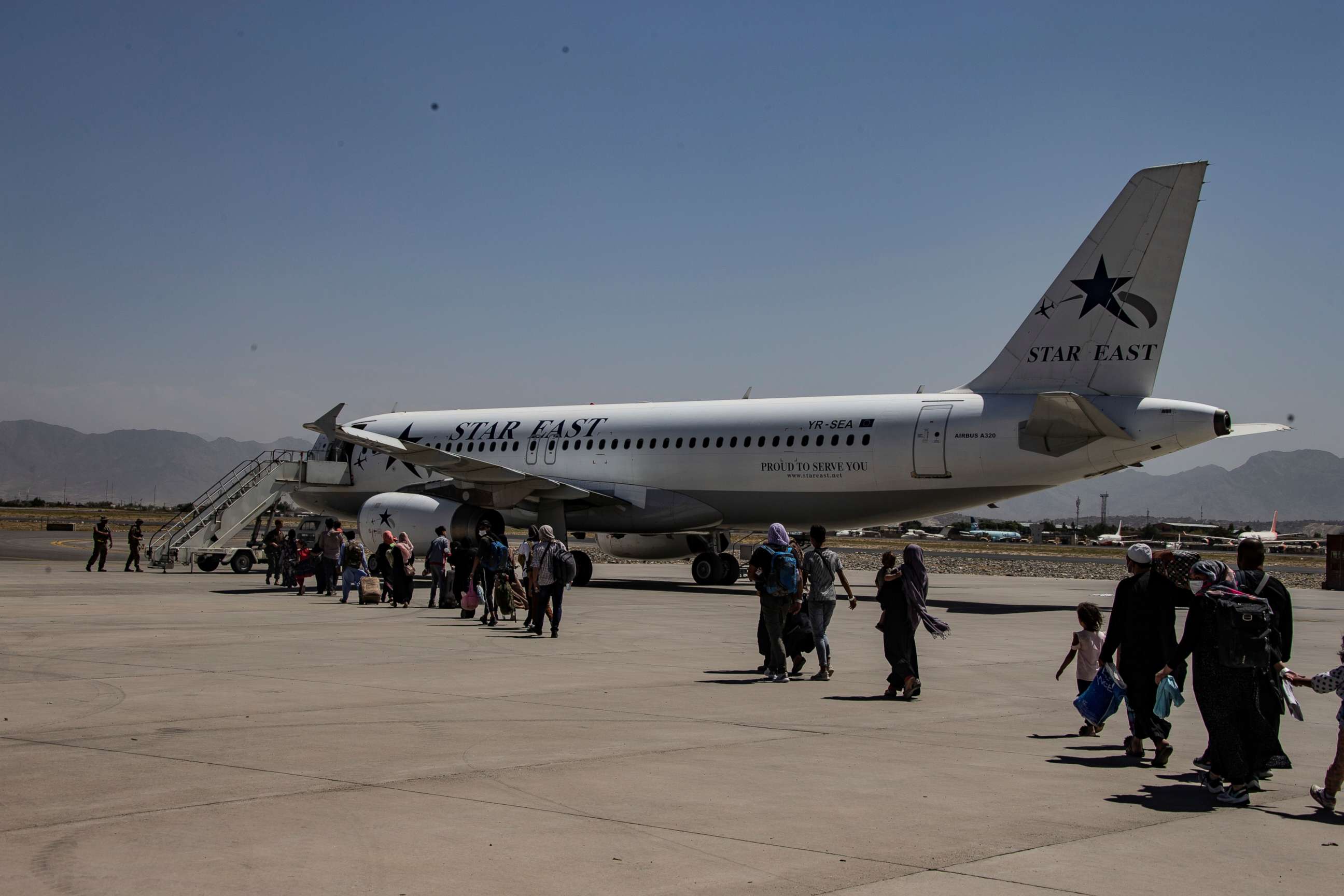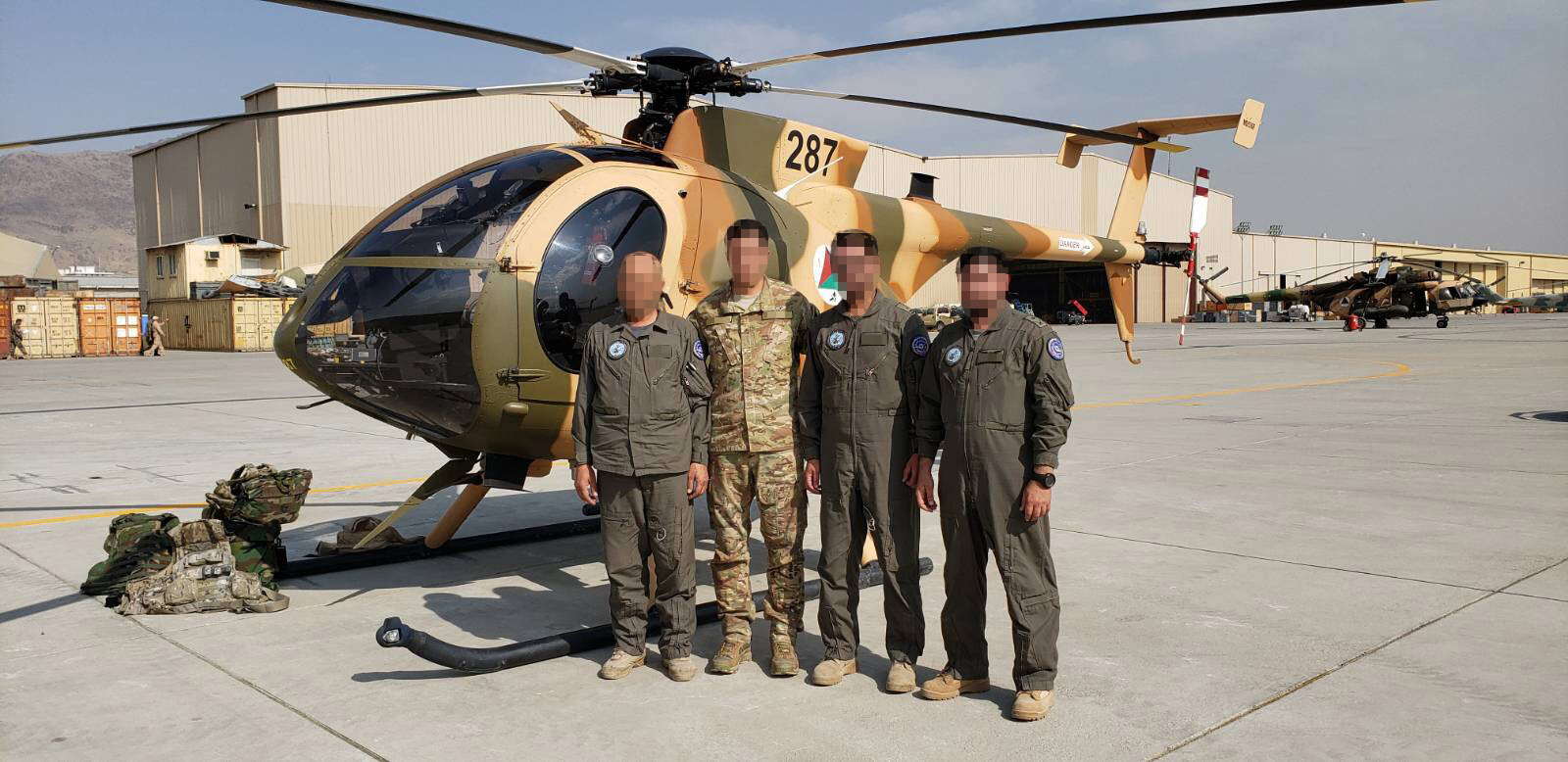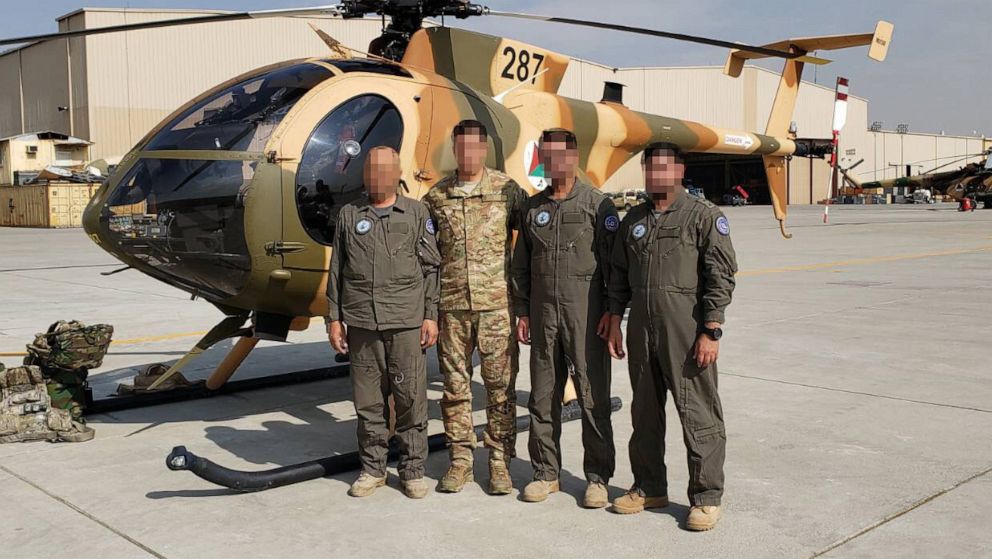Afghan Air Force pilots trapped in Afghanistan plead for evacuation
Around 50 U.S.-trained former Afghan Air Force helicopter pilots are still trapped in Afghanistan and pleading for the United States government to evacuate them from the country, where they fear they face execution if found by the Taliban.
The pilots belong mostly to two helicopter squadrons and have been in hiding since the Taliban seized Kabul in August. According to several of the pilots who spoke to ABC News, they are living on the run in safe houses and struggling to feed themselves while frantically trying to find a way out of Afghanistan as the Taliban continue to search for them.
The aviators are among thousands of former Afghan military personnel and hundred of pilots who were left behind during the mass evacuations in August and who, for now, have no route out.
Former and current U.S. military officers who are lobbying to have the pilots evacuated say they are frustrated, because they believe the U.S. government's current refugee policy treats them as a low priority despite the clear danger to them.
"They're not really being given any kind of priority right now," said David Hicks, CEO of Sacred Promise, an NGO created by current and former American military officers trying to help Afghan military personnel leave.
"They're U.S.-trained, they know English, have worked with the U.S. and have fought the Taliban directly," Hicks, a former brigadier general, told ABC News. "One would think individuals of that caliber would get some level of prioritization in the big-picture process. And here they are, just sitting in the back of the line right now."
Hick's organisation says besides the helicopter pilots it knows of at least 250 more former pilots from Afghanistan's Air Force and Special Mission Wing who are still trapped in the country.

Pentagon spokesperson Maj. Robert Lodewick told ABC News it was aware that former members of the Afghan Air Force remain in Afghanistan and said "we are working all available options to facilitate their departure."
He said the State Department has helped over 800 Afghan Air Force and Special Mission Wing personnel begin the resettlement process since Aug. 31.
Since taking power, the Taliban have rounded up former Afghan military personnel it believes are a threat or useful to them and, in some cases, have imprisoned or killed them. Human Rights Watch found that Taliban forces have summarily executed or disappeared over 100 former police and intelligence officers in four provinces since August. The total such killings is likely higher.
The pilots say their squadrons killed hundreds of Taliban fighters during the war, including senior commanders, meaning they will almost certainly face harsh retribution.
"Maybe they will cut our skin from our body," one of the pilots told ABC News by phone from hiding. ABC News is not identifying him or other pilots for their security.
The pilot, a former captain, was part of two helicopter squadrons that were based in Kabul and Kandahar, flying MD530 helicopters. The squadrons' pilots were highly trained, with many receiving instruction abroad, including in the U.S., and they worked closely with American military advisers.
They were unable to get onto U.S. evacuation flights from the Kabul airport amid the city's chaotic fall in August. Since then, the Taliban have closed Afghanistan's borders. Commercial flights from Kabul are stopped, and chartered evacuation flights have slowed to a trickle.

Now scattered across Afghanistan, some with their families, the pilots say they are largely unable to go outside for fear of falling into the Taliban's hands. Unable to work, their money is running out and they are increasingly struggling to feed their families amid a humanitarian catastrophe in the country, several of the pilots said.
"They left us in the really bad situation. Because even we don't have money to buy food for our kids," another pilot said. He has four children, ages 2 to 9, and one has a serious blood disorder.
"We fought years for U.S. goals, but in the end they left us behind alone in poverty," he said.
More than 500 Afghan Air Force personnel were able to escape Afghanistan in August by flying their aircraft to neighboring Tajikistan and Uzbekistan. After they spent weeks in detention, the U.S. succeeded in airlifting them to Dubai, where they will be processed for resettlement to the U.S.
But the pilots trapped in Afghanistan said they have been told there is little prospect of getting them out in the short term.
One or two charter flights facilitated by the U.S. government or organized by private charities continue to leave Afghanistan most weeks, but they are mainly carrying civilians. The number of flights has greatly fallen since August, and those being approved for seats on them has slowed. Only around 3,000 Afghans have been evacuated since late September.

U.S. military officers lobbying to help the pilots said they believe, while difficult, it should be possible to get the pilots onto evacuation flights if they are given the right priority.
Hicks, of Sacred Promise, said he thinks many former Afghan military personnel are currently lower priority than civilians, despite having strong claims for refugee status.
The State Department has been prioritizing the evacuation of so-called Special Immigrant Visa or SIV holders, which are Afghans who worked directly for the U.S. mission. In early August before the Afghan government collapsed, the Biden administration created another type of refugee status, known as Priority 2, or P2, for Afghans deemed at-risk but who had not worked for the U.S. government directly. It was meant for women's rights activists, journalists and former Afghan military personnel, but applicants must depart the country first -- too high a hurdle for many.
Hicks said that system has created a situation where Afghan military personnel, despite often being in more danger than some SIV evacuees, are still stuck behind, with no prospect of fast rescue.
"I don't understand how literally someone -- no offense to anybody -- but how someone could be a janitor working at the U.S. Embassy has a higher priority than an Afghan Air Force or Special Mission Wing pilot who's been fighting the Taliban," Hicks said.
Sacred Promise's staff includes current military officers who for years worked as mentors with the pilots in Afghanistan and who are able to verify their identities. Hicks said the NGO has already vetted 2,000 former Afghan military personnel, who he said could immediately start being processed for asylum if evacuated.
Some senators, including Sen. Richard Blumenthal (D-Conn.), Sen. Lindsey Graham (R-S.C.) and Sen. Joni Ernst (R-Iowa) have called for the Biden administration to step up its efforts to get at-risk Afghans out, saying it is not doing enough.

Hicks and the pilots acknowledged that the U.S. government is facing a gargantuan challenge in getting people out. But he said he believes that since his organization is able to help vet the pilots -- and considering the urgent danger to them -- it makes sense to move faster on them.
"That's the thing that frustrates us the most, and we're trying to get the discussion why that prioritization can't get tweaked or adjusted in this situation," he said.
The pilots still in Afghanistan fear time is running out for any evacuation. They said they have become particularly alarmed since they now believe the Taliban has found a database that holds their personal details and biometric data, including finger prints.
Trapped at home, one of the pilots has little to do but worry. He finds himself watching videos on social media of executions of ex-Afghan military members.
"As we give them more time, they have more chance or opportunity to find us," he said. "If I stay in Afghanistan, they will definitely arrest me one day."
Update: This article has been updated to include latest figures of the number of former Afghan Air Force pilots estimated to still be trapped in Afghanistan. The NGO Sacred Promise says it is aware of at least 300 former Afghan Air Force and Special Mission Wing pilots still in the country, including the around 50 pilots from the MD530 helicopter squadrons.




